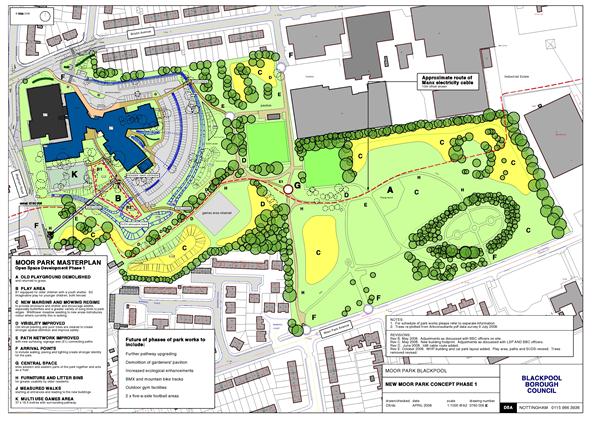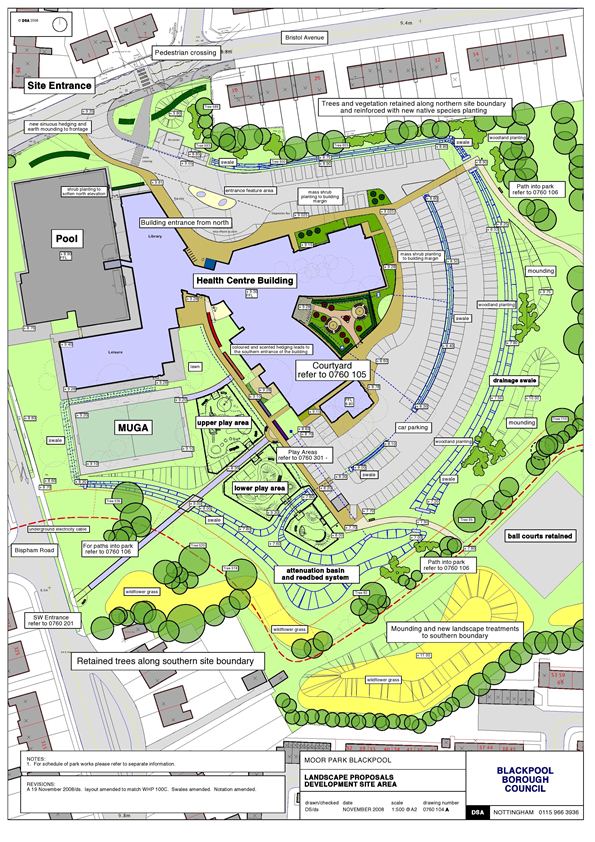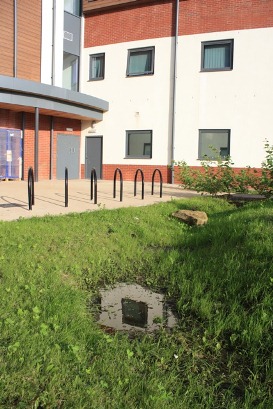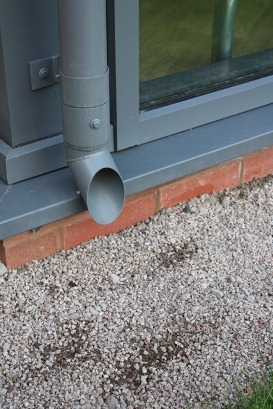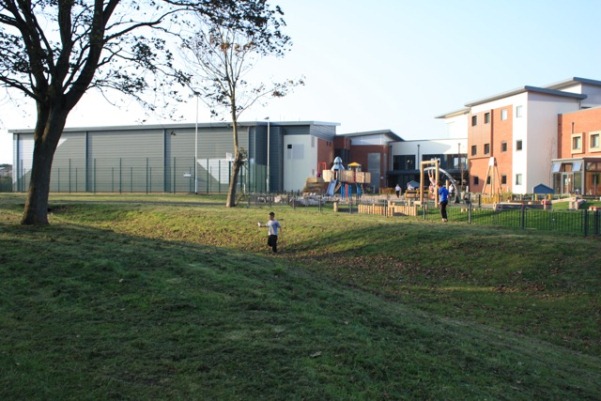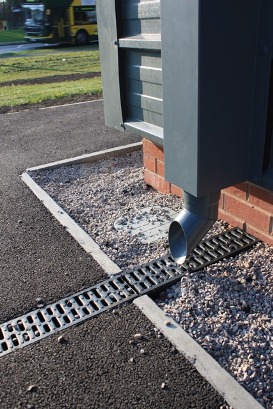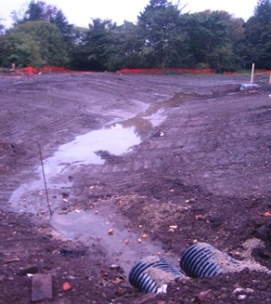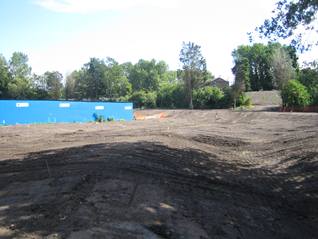Where
Location
Junction of Bispham Road and Bristol Avenue, north of Blackpool town centre, Lancashire, next to the former TVR car factory.
Description
The Moor Park development is a large healthcare building, incorporating leisure and library uses as well as new play areas and a multi-use games area. It is set in the north west corner of an existing park, Moor Park, in the residential neighbourhood of Bispham. The building is served by a large (200 space) car parking area. It lies at roughly 10mAOD and is broadly flat, falling to the south.
The development site is around 3.4ha, including the surrounding earthworks and ‘soft’ play areas. Surface water drainage is to a combined sewer running underneath the site (pre-existing drainage). Soils are mixed, but incorporate a high proportion of sands.
|
Figure 1 Moor Park masterplan (David Singleton) Click on image to enlarge |
|
Figure 2 Building layout (David Singleton) Click on image to enlarge |
Main SuDS used
From the very early stages of the project, the proposed location of such a large development in a designated green space demanded a high level of sensitivity and a landscape led approach. This is reflected in the form and arrangement of buildings and spaces. The concept of a SuDS treatment train to deal with stormwater was developed between the client and the design team. The building location was adjusted to enable an innovative and almost totally above-ground solution. Car parks and swale system were designed together, to form a series of arcs, centred on the building. Very little underground drainage is used, with kerbs omitted and rainwater pipes discharging directly into swales.
The Environment Agency requested the use of SuDS.
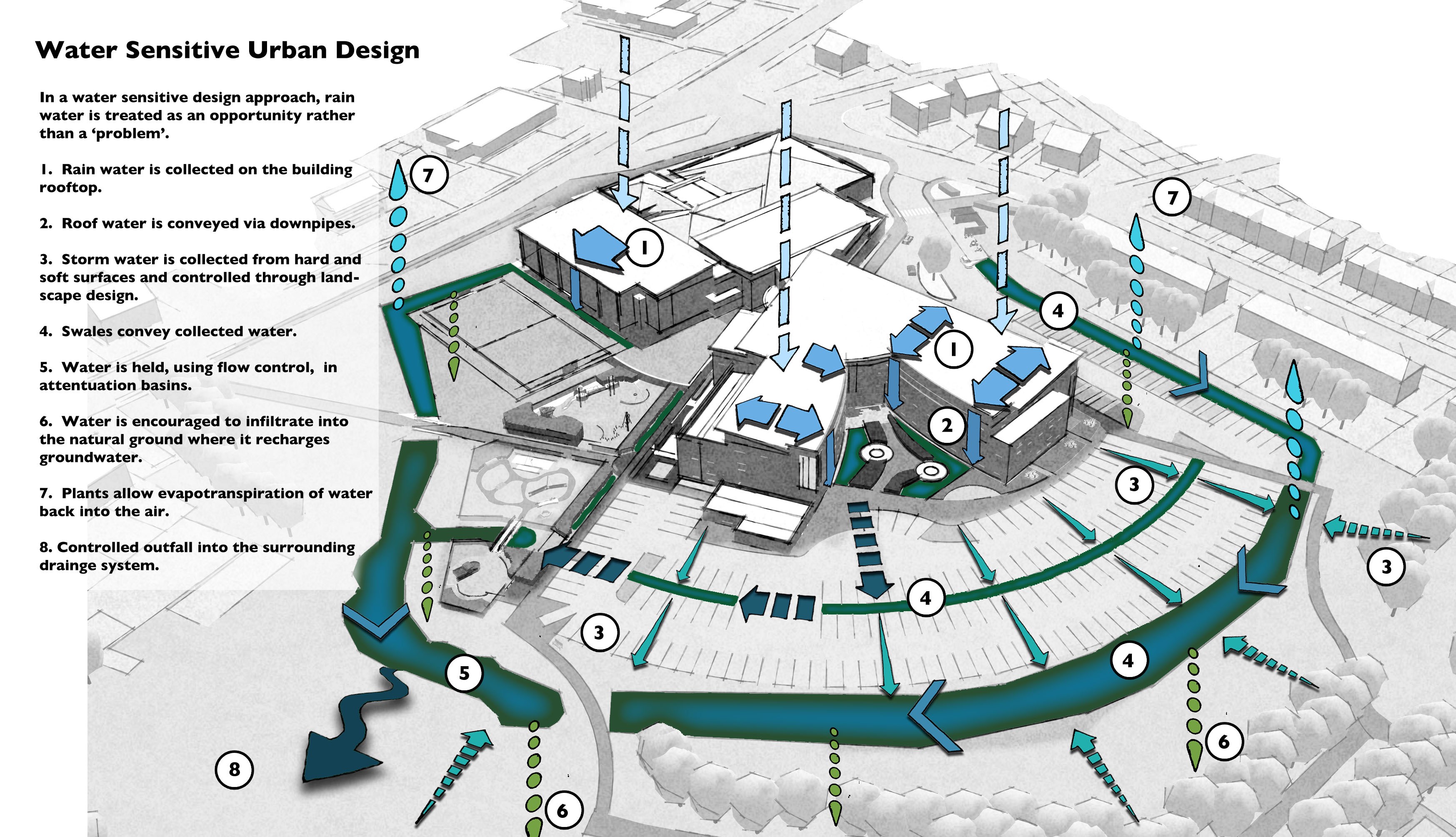 |
|
Figure 3 Schematic of water sensitive urban design for Moor Park (click image to enlarge) |
How it works
Most water is taken from the building roof and hard areas above ground into concentric rings of swales, which carry it around the east and south of the development to a large attenuation basin. The basin and swales contain an extensive area for natural play, within which are a series of designated play spaces for different ages of children.
A second bio-swale system to the western side envelopes the Multi Use Games Area (MUGA) and brings water into the attenuation basin. The total surface water areas drained from car parking areas and the new building is 1.14ha.
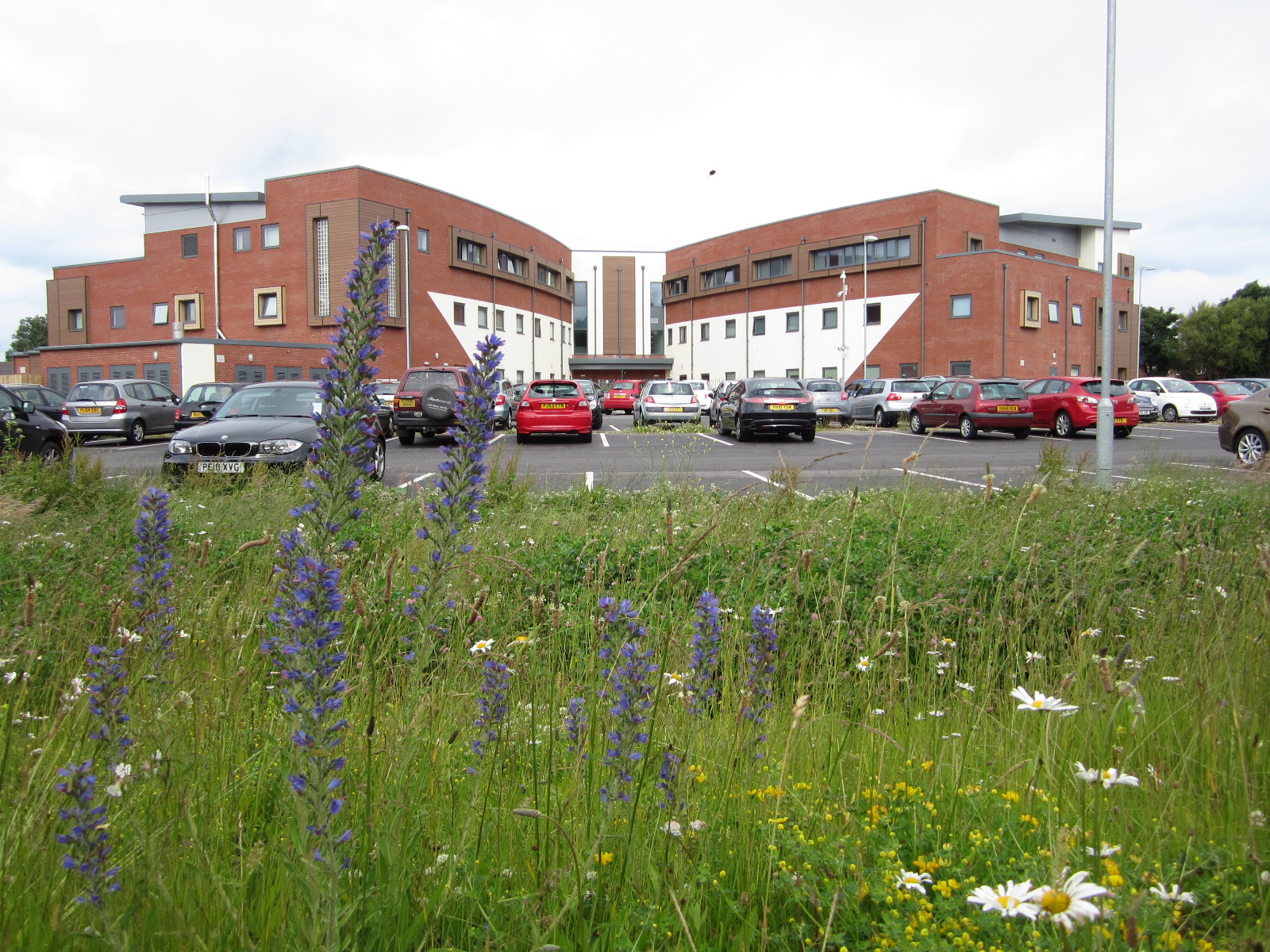 |
|
Figure 4 The innovative SuDS design takes advantage of the nature of the site and the ecological quality has significantly improved |
The bio-swales are very shallow and have been carefully graded to fit into the new landscape and enable mowing. Longitudinal sections were adjusted in fine detail on site to enable wetter areas to ‘pond’ water and allow intermediate development of taller marginal species. It is envisaged that much of the time the basins and swales would not hold standing water.
Basins and swales contain two stage treatment with separation by both gabion baskets and earth forms to increase water residence times. Rocks, excavated from the site, are re-used to improve the natural appeal of the system.
Swales are approximately 595m in total with connecting linear drainage keeping surface water just below the surface level.
|
|
|
|
Figure 5 Courtyard with SuDS components (David Singleton) |
Figure 6 Disconnected downpipe (David Singleton) |
Specific details
Moor Park was formerly a rubbish tip, used as a public park since around 1950. Surveys revealed that its overall biodiversity was low, relative to other sites in the area and no wetland was present.
Soils on site are very mixed and have evidently been heavily re-worked. Made ground was found between 1.9-3.6m in depth. Underlying the made ground the natural strata was found to be peaty clay to a depth of between 3.8-5.7m below ground level. Below the peaty clay the natural strata was found to be boulder clay.
The scheme was designed to meet a 1in 100 year plus 20% for climate change return period storm. The discharge rate from the pond into the existing combined sewer is 74.5 litres per second. The pond will store a volume of 276 m³ of water in the 100 year plus 20% storm at a maximum depth of 622mm.
Water exits the site via a 225mm diameter pipe which connects to the existing 600mm diameter combined sewer crossing the site. Gabions have been constructed with ‘invisble’ pipes to improve aesthetic appearance and safety.
Planting was modified to cope with actual conditions on the ground. It was observed that ponding occurred, due to considerable variations in soil structure, in places along the system that could not be anticipated at design stage.
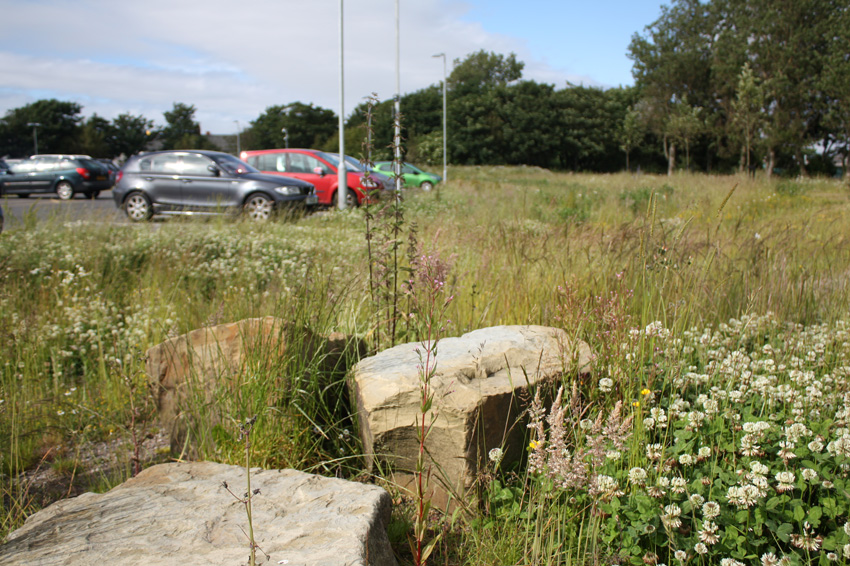 |
|
Figure 7 Most water is taken from hard areas above ground into concentric rings of swales |
A novel feature of the scheme has been the engagement of the local community in the project. The opportunity was presented to show children at two of the local schools what was happening and to work with them in the design of some of the art features, signage and play areas. This enabled the idea of SuDS as a learning and teaching resource to be explained.
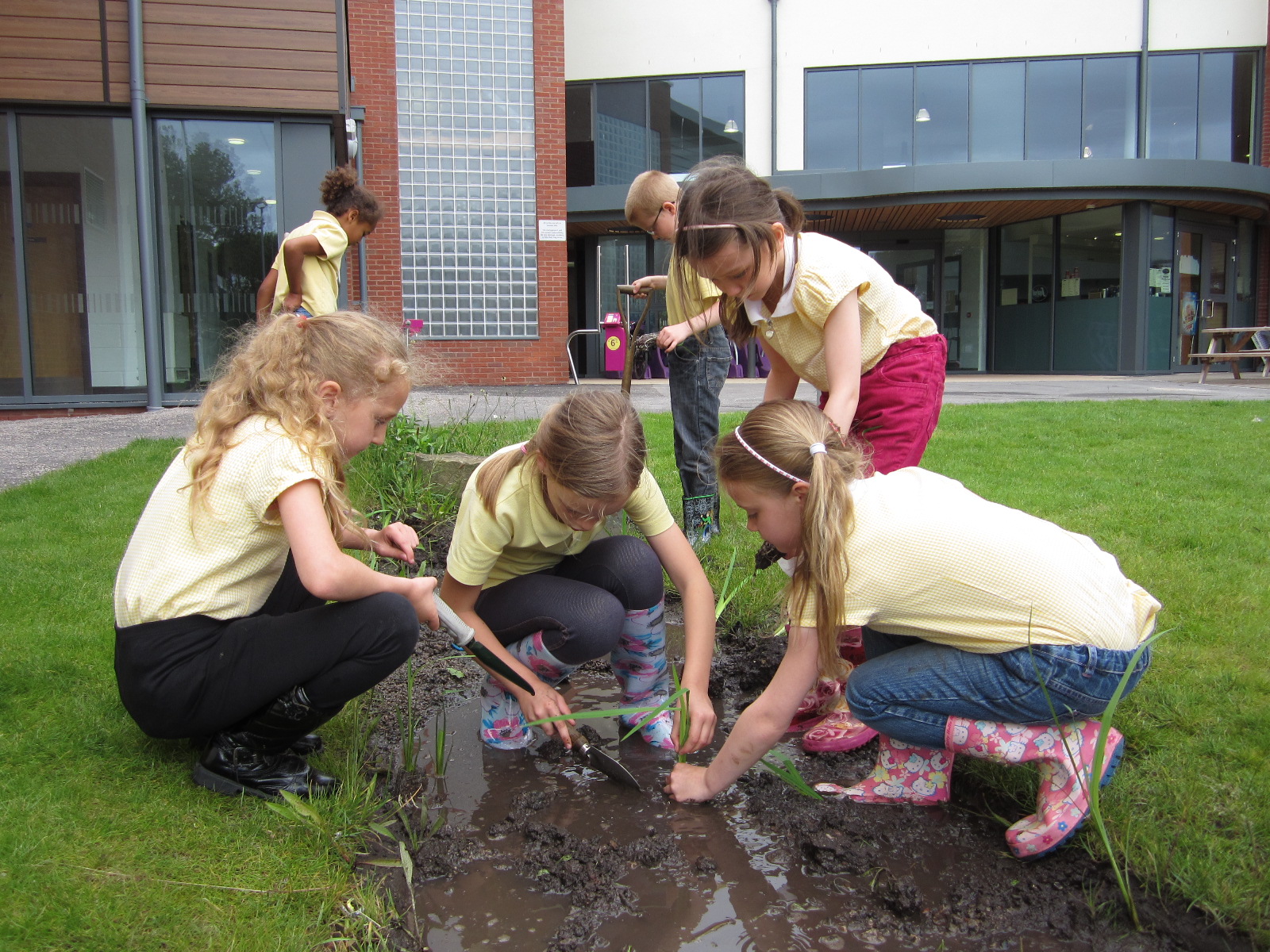 |
|
Figure 8 Children were able to get involved with the planting and have some fun |
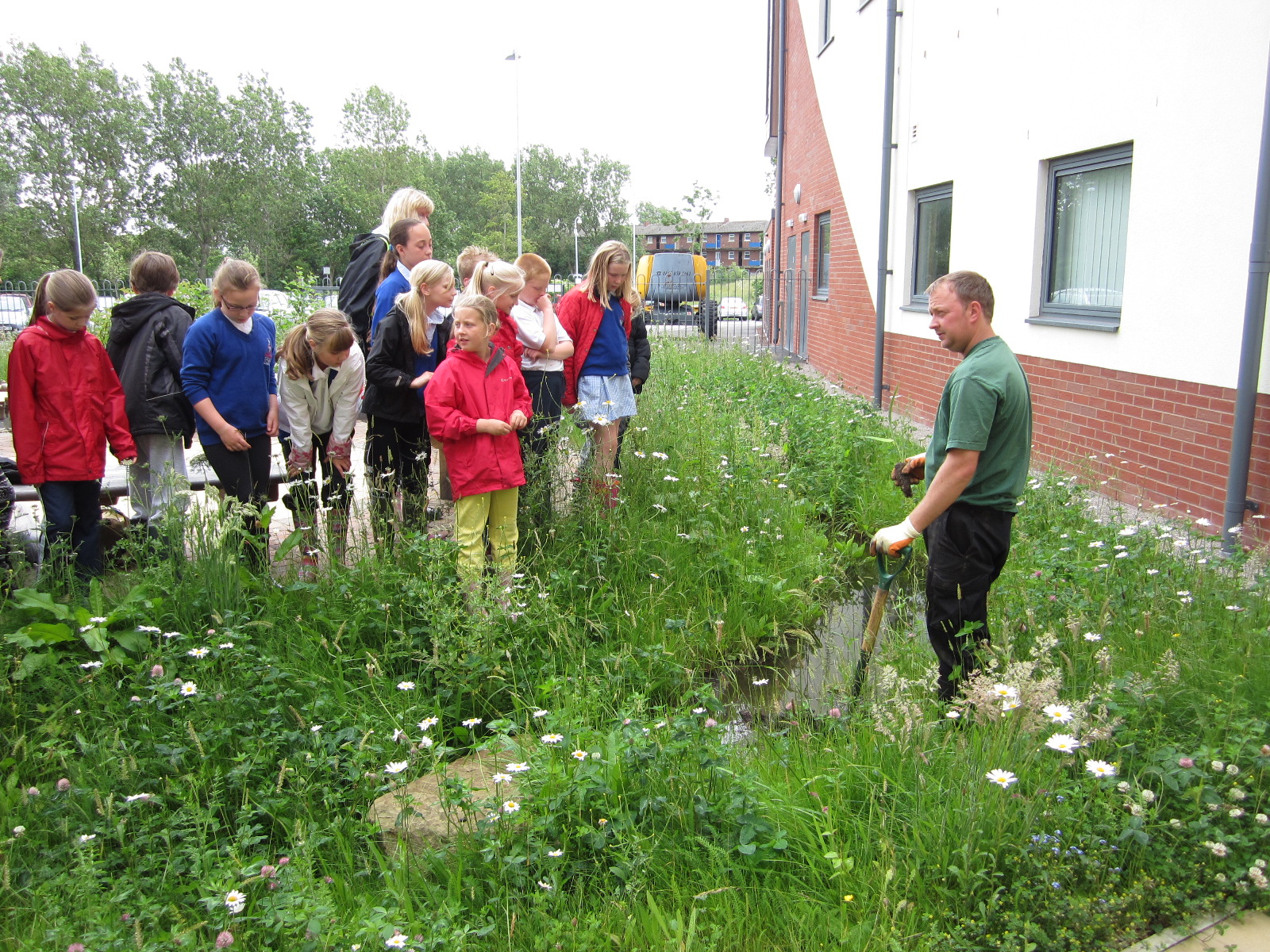 |
|
Figure 9 The children have benefitted from immediate access to the broad and diverse landscape surrounding the school |
|
|
|
Figure 10 Low flow swale (David Singleton) |
|
|
|
Figure 11 Disconnected downpipe to the sports hall channel (David Singleton) |
Benefits & achievements
-
Control of runoff to greenfield runoff rate.
-
Wetland features manage runoff to ensure clean water enters the natural drainage system.
-
No oil interceptors. Instead water is treated biologically through the system.
-
Significantly lower cost of installation over a conventional piped or underground drainage.
-
Massive biodiversity potential.
-
Powerful and exciting visual features making sustainable design obvious.
-
Engagement with school staff and students.
-
Ongoing work – potential data on performance.
-
Monitoring of performance through Blackpool Council staff and rangers.
-
Anticipated involvement of local people and potentially Moor Park Friends Group.
Challenges & lessons learned
The following challenges were overcome during the project:
-
Client uncertainty of suitability of above-ground SuDS solution.
-
Safety and maintenance concerns.
Reassurance provided by carrying out visits to previously installed SuDS schemes including Blythe Valley Park and seeing these work well.
|
|
|
|
Figure 12 SuDS under construction. (David Singleton). |
Figure 13 The main detention basin is downstream of this, which shows the care taken to grade swale sides (David Singleton) |
Interaction with local authority/team
Support from Blackpool Council Planning, Parks and Urban Design officers.
Support from Environment Agency.
Officer contact: Planning Case Officer. Blackpool Council Mark Shaw, Ian Ward
Team
Funder: Assura Properties
Developer: LSP Developments/Blackpool Council
Engineer: BSP Consulting, Derby
Landscape Architect: DSA Environment + Design, Nottingham
Architect: West Hart Partnership, Tamworth
Main contractor: Pochin Construction, Middlewich




